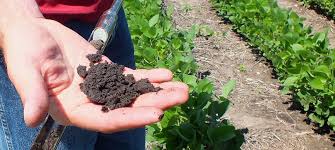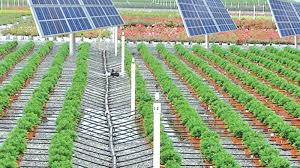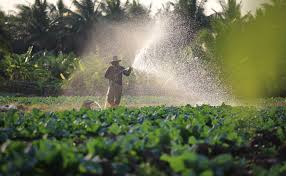Sustainable resource management in agriculture involves using resources such as soil, water, and biodiversity in ways that ensure long-term agricultural productivity while minimizing environmental impact.
It combines methods to preserve natural resources, reduce waste, and promote resilience to climate change. Sustainable agriculture practices not only help meet current food demands but also ensure that future generations have access to the resources needed for food production.
Importance of Sustainable Practices in Agriculture
Sustainable agricultural practices are essential to maintaining ecosystem health, preserving resources, and ensuring food security. Key reasons for the importance of sustainable practices include:
1. Environmental Protection: Sustainable methods help protect natural ecosystems, reducing pollution, conserving water, and preventing soil degradation.
2. Resource Efficiency: Sustainable agriculture reduces resource wastage, optimizing inputs such as water, fertilizers, and energy to maximize productivity.
3. Climate Resilience: By improving soil health, conserving water, and enhancing biodiversity, sustainable practices make farms more resilient to climate change and extreme weather events.
4. Long-term Productivity: Healthy soils, clean water, and biodiverse environments support consistent crop yields and agricultural productivity over time.
5. Supporting Communities: Sustainable agriculture helps rural communities by improving health, increasing job opportunities, and maintaining the productivity of local land resources.
Key Challenges in Agricultural Resource Management

Agricultural resource management faces several challenges that can hinder sustainability and productivity. These challenges include:
1. Soil Degradation: Intensive farming and poor land management can lead to erosion, nutrient depletion, and loss of soil structure, all of which reduce agricultural productivity.
2. Water Scarcity: Many agricultural areas face water shortages, which can limit crop production and lead to competition over water resources.
3. Pollution and Waste: The use of pesticides, fertilizers, and other chemicals in agriculture can result in pollution, harming water sources, soil health, and biodiversity.
4. Biodiversity Loss: Monocropping and habitat destruction reduce biodiversity, making ecosystems less resilient and increasing vulnerability to pests and diseases.
5. Climate Change: Rising temperatures, changing rainfall patterns, and extreme weather events pose serious risks to agriculture, affecting crop yields and farming conditions.
Water Management Strategies for Sustainable Agriculture
Water is a vital resource in agriculture, and sustainable water management helps ensure its efficient use. Some effective strategies include:
1. Drip Irrigation: This system delivers water directly to plant roots, minimizing evaporation and runoff, which conserves water.
2. Rainwater Harvesting: Capturing and storing rainwater for agricultural use reduces dependence on external water sources and helps manage droughts.
3. Efficient Scheduling: Watering crops at optimal times, such as early morning or late evening, reduces evaporation and improves water use efficiency.
4. Soil Moisture Sensors: These sensors help monitor soil moisture levels, allowing farmers to irrigate only when necessary and prevent overwatering.
5. Mulching: Applying organic or synthetic mulch around crops reduces water loss through evaporation and helps maintain soil moisture.
Read Also: Systems of Livestock Production
Soil Conservation and Health Improvement Techniques

Healthy soils are crucial for sustainable agriculture, as they support plant growth, retain moisture, and prevent erosion. Key soil conservation techniques include:
1. Crop Rotation: Rotating different crops in the same field improves soil fertility, reduces pest buildup, and prevents nutrient depletion.
2. Cover Cropping: Planting cover crops during off-seasons helps protect soil from erosion, improves organic matter, and enhances soil health.
3. Conservation Tillage: Reduced or no-till farming methods minimize soil disturbance, helping to maintain soil structure, reduce erosion, and increase water retention.
4. Organic Amendments: Adding compost, manure, and other organic materials enriches soil with nutrients, improves soil structure, and boosts microbial activity.
5. Terracing: Creating terraces on slopes reduces water runoff and soil erosion, making steep lands more productive and conserving soil.
Integrated Pest Management (IPM) Approaches
IPM is a sustainable approach to pest control that minimizes reliance on chemical pesticides, using a combination of biological, cultural, and mechanical methods. Core IPM approaches include:
1. Biological Control: Using natural predators, such as ladybugs for aphids, reduces pest populations without chemical intervention.
2. Crop Rotation and Intercropping: These practices disrupt pest life cycles, reduce habitat for pests, and increase biodiversity, helping control pest populations naturally.
3. Mechanical Control: Physical methods, such as traps, barriers, and hand-picking, directly remove or prevent pests from affecting crops.
4. Chemical Control as a Last Resort: When necessary, IPM incorporates targeted pesticide applications, using selective and environmentally friendly chemicals.
5. Monitoring and Scouting: Regular crop monitoring helps identify pest issues early, allowing for timely intervention with minimal environmental impact.
Read Also: Are Honey Bees Endangered?
Efficient Use of Renewable Energy in Agriculture

Renewable energy sources are crucial for sustainable agriculture as they reduce reliance on fossil fuels, decrease greenhouse gas emissions, and promote energy efficiency. Effective ways to integrate renewable energy in agriculture include:
1. Solar Power: Solar panels can power irrigation systems, greenhouses, and other farm operations, reducing dependence on grid electricity.
2. Wind Energy: Wind turbines can generate electricity for agricultural needs, especially in rural and coastal areas with high wind potential.
3. Biomass Energy: Organic farm waste, such as crop residues and manure, can be converted into bioenergy, providing a renewable energy source while managing waste.
4. Geothermal Energy: Geothermal systems can heat greenhouses and help with soil warming, extending the growing season in colder climates.
5. Hydropower: Small-scale hydroelectric systems can generate power for farms with access to flowing water, providing a consistent and renewable energy source.
Sustainable Crop Rotation and Diversification Methods
Crop rotation and diversification are essential for maintaining soil health, preventing pest buildup, and reducing the need for chemical inputs. Key methods include:
1. Rotating Nitrogen-Fixing Crops: Planting legumes like peas, beans, and clover helps restore soil nitrogen, reducing the need for synthetic fertilizers.
2. Diversifying Crop Varieties: Growing different crop types in succession improves biodiversity, enhances soil health, and reduces the risk of pest and disease outbreaks.
3. Seasonal Crop Rotation: Rotating warm and cool-season crops minimizes soil depletion and improves overall farm productivity.
4. Incorporating Cover Crops: Planting cover crops, such as rye or vetch, during off-seasons helps prevent erosion, enhances organic matter, and improves soil fertility.
5. Integrating Livestock Grazing: Rotating livestock through crop fields promotes nutrient cycling, reduces weed pressure, and supports sustainable pasture management.
Role of Agroforestry in Resource Conservation
Agroforestry integrates trees with crops and livestock, promoting biodiversity, enhancing soil health, and conserving resources. The role of agroforestry in resource conservation includes:
1. Soil Protection: Tree roots stabilize soil, preventing erosion and preserving soil structure.
2. Water Conservation: Trees provide shade, reducing evaporation and helping to retain soil moisture, which benefits crops and livestock.
3. Biodiversity Enhancement: Trees create habitats for beneficial organisms, improving pest control and pollination services naturally.
4. Carbon Sequestration: Trees capture and store carbon, reducing greenhouse gas emissions and contributing to climate change mitigation.
5. Improved Microclimate: Trees create a more favorable microclimate by reducing wind speed, lowering temperatures, and providing shelter for crops and animals.
Managing Waste and Recycling in Agriculture
Proper waste management in agriculture helps reduce environmental pollution, conserve resources, and improve farm sustainability. Effective strategies for waste management and recycling include:
1. Composting: Organic waste, such as crop residues and livestock manure, can be composted to produce nutrient-rich soil amendments.
2. Anaerobic Digestion: Livestock manure and other organic waste can be processed in anaerobic digesters to produce biogas, which serves as a renewable energy source.
3. Recycling Water: Implementing water recycling systems, such as rainwater harvesting and wastewater treatment, conserves water and reduces waste.
4. Reusing Packaging Materials: Farms can recycle and reuse packaging materials, like crates and pallets, reducing the need for single-use plastics and other non-biodegradable items.
5. Upcycling Agricultural By-Products: Agricultural by-products, such as straw and husks, can be used for animal bedding, biofuel production, or as building materials.
Policy and Government Support for Sustainable Practices
Government policies play a critical role in encouraging sustainable agricultural practices. Support mechanisms may include:
1. Financial Incentives: Grants, subsidies, and tax breaks for adopting renewable energy, conservation practices, and sustainable technologies.
2. Research and Development Funding: Investments in research to develop innovative and sustainable agricultural practices and technologies.
3. Education and Training Programs: Initiatives that provide farmers with knowledge and skills in sustainable agriculture, such as workshops, courses, and extension services.
4. Regulatory Standards: Regulations that promote sustainable practices, including water management guidelines, pesticide use restrictions, and soil conservation mandates.
5. Certification Programs: Government-supported certifications, like organic or sustainable farming labels, that encourage consumers to support environmentally friendly agricultural products.
Implementing these practices and policies creates a sustainable agriculture system that conserves resources, protects the environment, and supports rural communities.
Do you have any questions, suggestions, or contributions? If so, please feel free to use the comment box below to share your thoughts. We also encourage you to kindly share this information with others who might benefit from it. Since we can’t reach everyone at once, we truly appreciate your help in spreading the word. Thank you so much for your support and for sharing!

